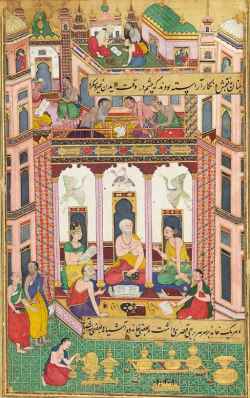Topic: 2. Sacrifice and religion: Comparisons, Antiquarians, Anthropology (16th-18th Century)
Religious sacrifices across various cultures and contexts sparked widespread interest in Early Modern Europe. As Christianity expanded into regions inhabited by "infidels" and "pagans", Europeans encountered a diverse array of sacrificial customs, ranging from the Sati rituals in India to the Aztec sacrifices in the Americas. This cross-cultural exposure captivated a wide audience, including theologians, philosophers, political thinkers, antiquarians, orientalists, missionaries, poets, artists, and even the general public. These encounters broadened the European understanding of sacrifice and led to a critical reassessment of classical and biblical sacrificial rites. This section includes:
- Sources: A selection of early modern printed materials, which include descriptions of the Americas, Asia, and Africa, alongside antiquarian and philological studies on religious sacrifice in classical antiquity and beyond. It also presents early modern works of ethnological observations and the first attempts to compare different sacrificial practices in various traditions and contexts, laying the groundwork for disciplines like the history of religions and anthropology.
- Iconographic Representations: A rich collection of images from the 16th to 18th centuries, illustrating a range of sacrificial rituals and practices as seen in different cultural and geographical contexts.
- Related Bibliography: An extensive bibliography spanning scholarly works from the 19th to 21st centuries, providing contemporary analyses and interpretations of these early studies and observations.
Through Fire : Creative Aspects of Sacrificial Rituals in the Vedic-Hindu Continuum
in: Sacrifice in Modernity : Community, Ritual, Identity : from Nationalism and Nonviolence to Health Care and Harry Potter, pp. 109-131
Leiden: Brill, 2017.
Augustine and the Economy of Sacrifice. Ancient and Modern
Cambridge: Cambridge University Press, 2019.
The building for King Dasaratha's sacrifice (Mughal India) (1594)
from: Miniature (35.4 x 21cm), fol. 27r
Christie's, London
Proceedings of the 3rd International Halal Conference (INHAC 2016
Singapore: Springer, 2018.
The right to ritual slaughter in Africa: a comparative constitutional analysis
in: Journal of Law and Religion, v. 3 (2017), issue : pp.470-490.
The Origin of Greek Sacrifice: Theophrastus on Religion and Cultural History
in: Theophrastean Studies on Natural Science, Physics and Metaphysics, Ethics, Religion, and Rhetoric, pp. 272-295
New Brunswick, NJ - Oxford: Transaction, 1988.
Cannibal talk: The man-eating myth and human sacrifice in the South Seas
Ewing, NJ: University of California Press, .
Las quatro partes enteras de la Cronica de España que manda componer el Serenissimo rey don Alonso llamado el Sabio. Donde se contienen los acontecimientos y hazañas mayores y mas señaladas que sucedieron en España. Desde su primera poblacion hasta casi los tiempos del dicho señor rey.
Zamora : Spinosa, 1541.
Los sacrificios humanos entre los aztecas. Un contexto de poder, mito y religión
in: Revista de Medicina e Investigación, v. 4 (2016), issue 1: pp.42-45.
Memoriale toscano: viaggio in India e Cina, 1318-1330
Alessandria: Edizioni dell'Orso, 1990.
Head, Eyes, Flesh, and Blood: Giving Away the Body in Indian Buddhist Literature
New York, Chichester: Columbia University Press, 2007.
Tableau général de l'Empire othoman. 3 vols: vol. 2
Paris: Firmin Didot, 1787-1820.
Las tres muertes del nuevo tlatoani: una nueva interpretación de los ritos de entronización mexica
in: Símbolos de poder en Mesoamérica, pp. 263-291
México: instituto de Investigaciones Históricas/Instituto de Investigaciones Antropológicas, Universidad Nacional Autónoma de México, 2008.
Violent Rituals of the Hebrew Bible
Oxford: Oxford University Press, 2019.
Il divieto dei sacrifici di animali nella legislazione di Costantino : una interpretazione sistematica
in: Poteri religiosi e istituzioni : il culto di san Costantino imperatore tra Oriente e Occidente, pp. 73-169
Torino: G. Giappichelli, 2003.
Sveti Đorđe sa izgledom manastira Senđurđa (St George with scenes from his life) (1769)
Galerija Matice Srpske, Novi Sad
Le Caucase et la Perse
Paris: Plon, 1885.
Les metamorphoses d’Ovide, en latin et françois, divisées en XV libres. Avec de nouvelles explications historiques, morales et politques sur toutes le fables, chacune selon son sujet. Henrichies de figures et nouvellement traduites par Pierre Du-Ryer de l’Academie Françoise
Paris: Antoin de Sommaville, 1660.


